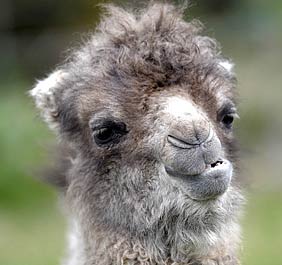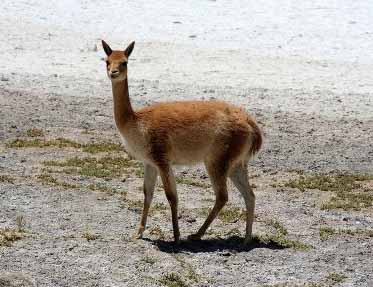Camels – Camelidae Family, Bright-Eyed Spitters

Bactrian youngster
There are 4 species of camel. The first two are the camels you might first think of: the one hump – the dromedary, and the two hump – the bactrian camel. The other two species are much smaller and are from South America. You might not recognize their names: the guanaco and the vicuña. However you might recognize the names of the domesticated versions: the llama is descended from the guanaco and the alpaca is descended from the vicuña.

Vicuña
The camels are known for how they eat their plant-based food with their three chambered stomach. First they eat it, then they regurgitate it, and chew it as cud over and over again for efficient processing of vegetable matter.
They are considered primitive “artiodactyla” mammals. That just means they have an even number of toes and they are primitive only in the sense that they haven’t evolved much in many years. They have a very unique foot structure, which allows them to walk steadily on sands and other soft soils. The foot bone is extended sideways to help support the flat broad side on each padded foot. Aside from these especially broad, stable two-toed feet, they have long slender legs and can have thick coats. They have rather small heads, a long snout, and a cleft upper lip. The humps on the back work as a reservoir, since fat is preserved inside these humps to help the camel live longer as it journeys through dry climates.
Although domesticated many onry individuals spit at each other when really upset and sometimes at humans too. How unruly but I guess that is better than biting. In general, they are pretty mellow.
The Bactrian species is almost completely domesticated with a small number of them still in the wild around the Gobi Desert.
